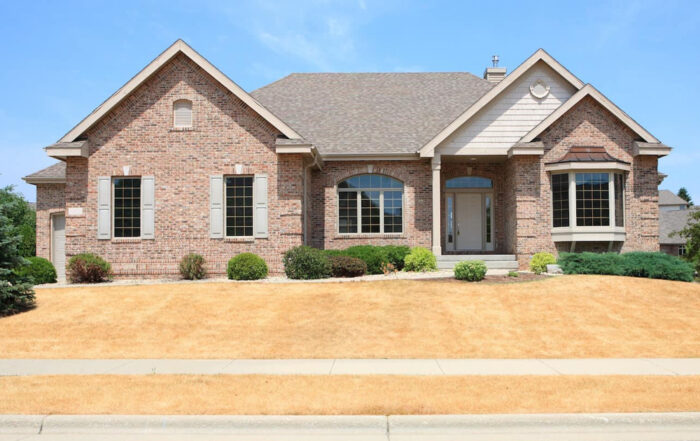The 4 Types of Foundation Drainage (Pros & Cons)
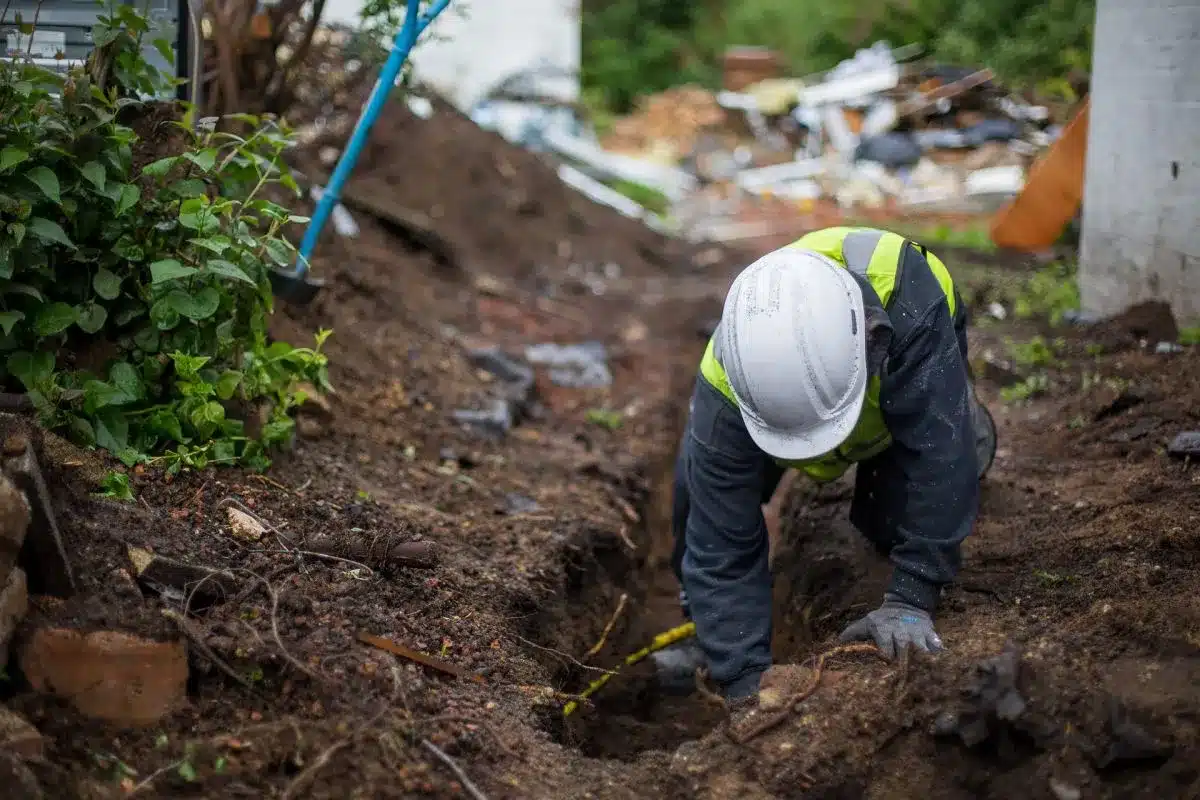
Every type of building needs some kind of foundation that can safely hold weight throughout the structure all the way down to the ground. This makes the foundation of your home one of the most critical parts, which is why it’s essential to protect it.
That’s where foundation drainage comes into play. Apart from the structural requirements for a home, having a proper drainage system is the key to ensuring the proper function of your foundation as well as your home’s safety. This is because the extended presence of moisture can easily damage your home’s foundation — which is something you want to avoid at all costs as a homeowner.
There are four types of foundation drainage available, and they each have their own set of pros and cons. In this article, we’ll cover everything you need to know about these foundation drainage systems to help you determine which will work best for your home.
What Exactly Is Foundation Drainage?
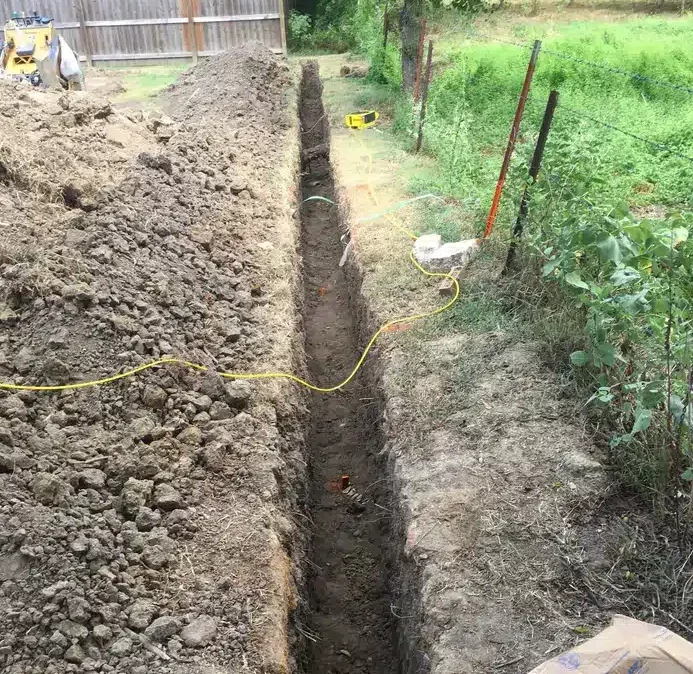
When we talk about foundation drainage, we’re referring to the exterior foundation drain that’s installed on the outer face of your home’s foundation wall and along the wall footing. If you’re having a difficult time imagining what that looks like, it’s probably because each foundation drain is typically covered by a layer of gravel and then backfilled with soil to keep it mostly hidden for aesthetic reasons.
The purpose of having a foundation drain is to expel any excess water that seeps into the foundation of your home. It’s essentially a pipe that’s covered with a mesh permeable “sock,” which prevents soil from getting in and clogging the pipe while the gravel above it allows water to flow directly towards it.
The Importance of Foundation Drainage
As mentioned above, foundation drainage is a critical factor in keeping your home structurally safe by essentially waterproofing it. Without a foundation drain, you run the risk of exposing your home to excess moisture, which will lead to a speedy deterioration and all sorts of foundation damages.
It’s important to understand the damages caused by a lack of foundation drainage can be very dangerous as well as costly to fix. Having said that, there are a few major reasons why you want to have a foundation drain set up around your home:
- It will prevent water from accumulating around and penetrating your home’s structure
- It will lower the chances of your home having substantial settlement issues over time
- There will be less soil erosion around your home
- The chances of mold and mildew growth as well as corrosion will be significantly minimized
- There will be a significantly reduced risk of termite and pest infestation
Most homeowners go unaware of the damage being done to their home’s foundation due to improper or no foundation drainage. If you own a home with a basement, it’s easier to tell as there will be visible moisture buildup on the basement walls. However, homeowners with crawl spaces will likely have no idea of the damage being done until it’s too late.
The 4 Types of Foundation Drainage
Foundation repair is very expensive, which is why foundation drainage installation should be done from the very start — as in, when the home is being built. If you’ve recently bought a home that doesn’t have a foundation drain, one can still likely be installed by the right contractor.
The type of foundation drainage system that you can choose will depend on two things:
- The surface area of the land surrounding your home
- The way in which rainwater drains from your roof naturally
Once these two factors are determined, you’ll be able to install a foundation drain that will waterproof your basement and ensure that the outside of your foundation walls are protected from becoming soaked with groundwater.
The four types of foundation drains you’ll likely be able to choose from include the following:
1. The French Drain
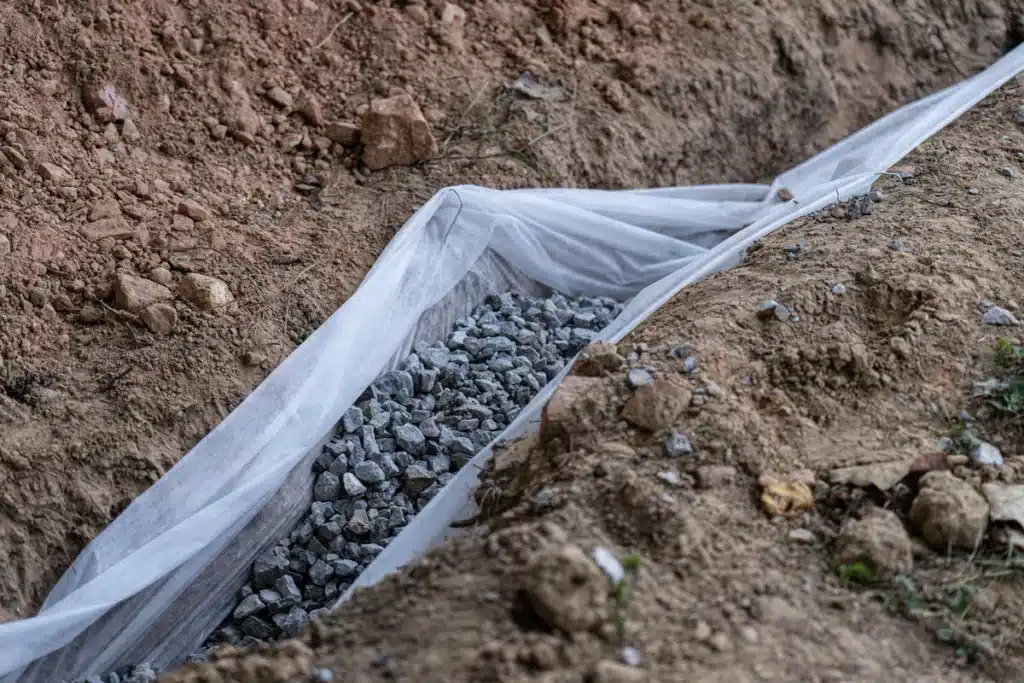
The french drain, also referred to as the weeping drain, is a drain pipe consisting of small perforations on its surface and a covering of porous backfill. The perforations allow water to easily enter — or, weep — into the drain pipe where it can flow away from the house while the porous backfill creates a direct pathway for water to reach the pipe.
The french drain is the most commonly used drain pipe used to provide drainage around foundations.
✅The Pros:
- They help prevent flooding to reduce your home’s overall risk of water damage
- They can last between 30 and 40 years
- They’re cost-effective and aesthetically pleasing
❌The Cons:
- The installation process can be long and tedious (and therefore, expensive)
- Existing structures, such as a deck or walkway, will need to be removed before installation
- They may not be applicable for homes that are close to water sources or power or communications lines
2. Footing Drainage
The footing drain is a very effective water drainage system. It’s essentially a french drain that’s installed around the perimeter of your foundation walls on the same level as its footing. It also gets covered in a porous backfill material, such as gravel and coarse sand, which allow water to easily seep through to the perforated pipe.
The installation of footing drains also requires them to run along a slope to carry the water away from your home more efficiently. The drainage is usually carried off to a sump pump, sewer, or body of water (whichever is closest).
✅The Pros:
- Footing drains prevent water from accumulating around your home’s foundation, reducing the overall risk of settlement
- They can last up to 50 years with proper installation
- They’re cost-effective
❌The Cons:
- Installation is costly as it typically takes places when the concrete foundation is installed
- The drain pipes can become clogged due to mud accumulation, which means they’ll require some maintenance
- There is potential for nitrates from the soil to seep into the drain and channel directly into nearby bodies of water causing contamination
3. Grading Drainage
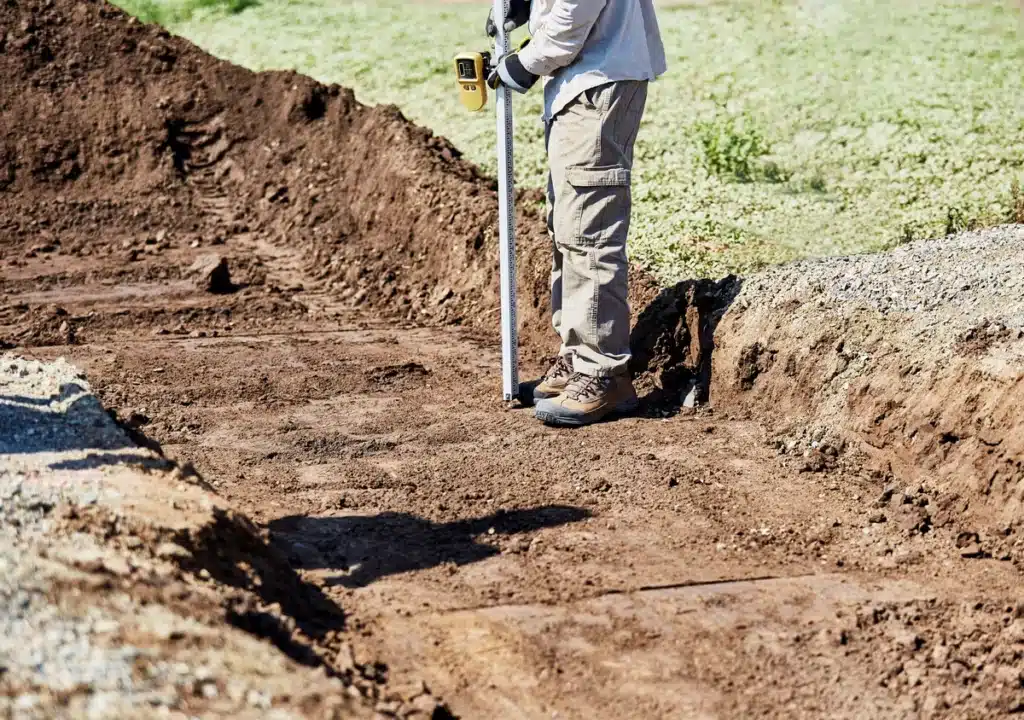
Grading drainage is one of the most efficient ways of providing drainage around a home’s foundation. Grading drainage involves creating a slope around the perimeter of your home that leads water away from its foundation.
Grading drainage is also usually installed at the same time your home’s foundation is built, and it ensures that water is immediately expelled into a nearby stormwater drain. However, with this type of draining solution, you may need to install a secondary drainage system, such as a french drain, to ensure all water is effectively carried away from your home.
✅The Pros:
- It can be used to naturally redirect water flow to a landscape or stormwater drain without clogging issues
- It increases your property’s useable space, which is advantageous for homeowners who like to garden or have foliage around the entire home
- It’s the most inexpensive draining solution
❌The Cons:
- There’s potential for over-saturation of garden soils
- Poorly installed grading drainage may allow water to pool and damage your home’s lower trim boards and siding
- There’s also potential for ponding water which can become a breeding ground for mosquitoes
4. Sump Pit and Pumps
Sump pit and pumps drainage are best for areas that see heavy rain and snowfall where simple gradients or slopes aren’t sufficient enough to move water away from the home. A sump and pumps drainage system is essentially a catch basin for water, however, it’ll only collect a certain amount of water before it actually begins to pump water out.
The sump pump portion of the drain is activated by a sensor trigger — which is the water rising to a certain level. Once triggered, the pump becomes active and water is pushed away from your home via perforated pipes that lead to a storm sewer. Sump pit and pumps drains are excellent for wet basements and long-term issues as they’re installed with a drainpipe running along the foundation wall, making them even more effective. They’re also usually covered in most home warranty plans.
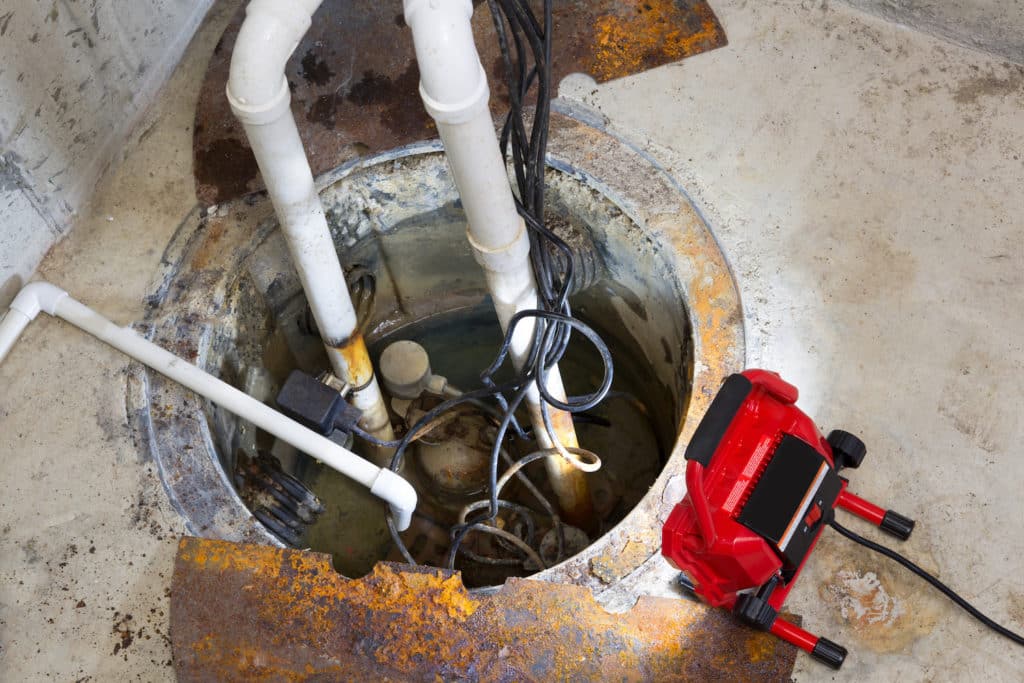
✅The Pros:
- They can protect against sewage backups
- They easily remove excess water that accumulates in your basement
- They’ll increase your property value
❌The Cons:
- They run on electricity, which means they require a battery backup to prevent mechanical damage, outages, and failure
- They require a sump pump pit beneath your home, which creates a potential risk for Radon gas leakage
- They’re not exactly attractive
Which Type of Foundation Drainage Is Best for Your Home?
The foundation of your home is only as secure as its drainage system. Without an adequate drainage system, you run the risk of your foundation deteriorating, putting you and your family at risk and amounting to costly repairs.
Figuring out what type of foundation drain is right for your home and property can be challenging without the help of an experienced foundation repair professional. Give Perma Pier a call to schedule an evaluation of your home’s foundation to determine the best type of foundation drain for your property.


